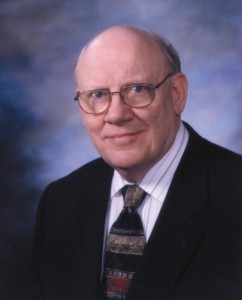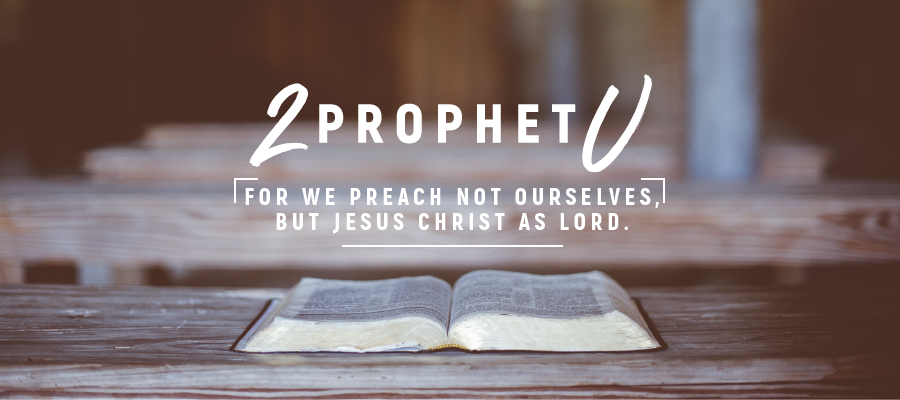On Reading Sermons
It isn’t likely to happen, but if you discovered Charles H. Spurgeon preaching in your area, would you schedule the time to go hear him? Of course you would! It would be the opportunity of a lifetime! Well, sixty-three volumes of Spurgeon’s printed sermons are available for you to read, but do you read them? For that matter, do you read the sermons of any of the other master preachers of the past, and do you know how to benefit from them?
We Read as Sinners
Too many preachers read, printed sermons only to find outlines and ideas that they can use, but that’s the wrong approach. To be sure, there are outlines and ideas galore in books of sermons, but any book that becomes a substitute for our own study and thought is really a liability and not an asset. Besides, somebody in the congregation may own the same book and accuse you of plagiarism.
No, we read sermons first of all as sinners who need to know more of the grace of God. We read as though we are sitting in the congregation, hearing the Word for the first time, receiving it in our hearts and being nourished by it.
We Read as Students
Musicians listen to music by other composers, artists study the paintings of other artists, and football coaches even ponder the plays of other teams, but for some reason, many ministers ignore the printed sermons of the master preachers. In so doing, however, they rob themselves and their congregations.
Studying printed sermons and discovering how other preachers handled a text is like taking a postgraduate course in homiletics. (For a helpful worksheet, see Appendix A of The Protestant Pulpit compiled by Andrew W. Blackwood [Abingdon, 1947.) We do this not to imitate but to investigate and to apply in our own preaching the things these preachers teach us.
We Read as Critics
After we’ve read a sermon for personal blessing and then for technical help, we should read it again as sympathetic critics. Times change and styles of communication change, so we don’t have to preach as did the Puritans or the sawdust trail evangelists. In fact, if these men were ministering today, they’d be the first ones to adapt their approach to the minds of the people.
I enjoy reading sermons on the same text by preachers from different eras in church history. It’s fascinating to see how preaching styles have changed. Charles Spurgeon often used long introductions and frequent references to Pilgrim’s Progress, which might alienate congregations today. Henry Jowett loved to play with words, while John Manton and Martyn Lloyd-Jones delved into the detailed particulars of each word in the text. Alexander Maclaren usually had three points to each message, while Harry Ironside emphasized no obvious outline as he masterfully expounded a passage verse by verse.
All preachers must be true to their own gifts and calling, but all of us can learn from those who take approaches different from our own. How does he get the attention of the listener? How does he state the purpose of the message? Does he have easy transitions from one point to the next? Do his illustrations shed light or merely decorate the message?
Meet the Preacher
Printed sermons are rarely exact transcripts of spoken messages because they’ve been edited for the printed page. We can’t hear the preacher’s voice, see his face or gestures, or feel the response of the original hearers. And, sad to say, many a powerful sermon has been defused by a zealous editor.
To overcome this problem, get to know the preacher and try to understand his heart and mind. Read biographies and autobiographies and seek to get “under the slain” of the preacher. You’ll be surprised at how this will help you when you read his sermons. It will be like listening to a friend.
Remember, we read printed sermons not to imitate but to “incarnate,” to close to the heart and mind of another servant of God and grow through the experience. Are you doing it?
©©2003 WWW used by permission. Originally published in Prokope, January-March 1997. This article copyrighted by the author and is for your individual use. Reproduction for any other purpose is governed by copyright laws and is strictly prohibited.

Dr. Warren Wiersbe (1929-2019) was an internationally known Bible teacher, author, and conference speaker. He graduated in 1953 from Northern Baptist Theological Seminary in Lombard, Illinois. While attending seminary, he was ordained as pastor of Central Baptist Church in 1951 and served until 1957. From September 1957 to 1961, Wiersbe served as Director of The Literature Division for Youth for Christ International. From 1961 to 1971 he pastored Calvary Baptist Church of Covington, Kentucky south of Cincinnati, Ohio. His sermons were broadcast as the “Calvary Hour” on a local Cincinnati radio station. From 1971 to 1978, He served as the pastor of Moody Church in Chicago 1971 to 1978. While at Moody Church he continued in radio ministry. Between August 1979 and March 1982, he wrote bi-weekly for Christianity Today as “Eutychus X”, taught practical theology classes at Trinity Evangelical Divinity School in Deerfield, Illinois, and wrote the course material and taught a Doctor of Ministry course at Trinity and Dallas Seminary. In 1980 he transitioned to Back to the Bible radio broadcasting network where he worked until 1990. Dr. Wiersbe became Writer in Residence at Cornerstone University in Grand Rapids and Distinguished Professor of Preaching at Grand Rapids Theological Seminary. In his lifetime, Dr. Wiersbe wrote over 170 books—including the popular Be series, which has sold over four million copies. Dr. Wiersbe was awarded the Gold Medallion Lifetime Achievement by the Evangelical Christian Publishers Association (ECPA).
 Warren Wiersbe Podcast
Warren Wiersbe Podcast
- An error has occurred, which probably means the feed is down. Try again later.
 Sherwood Baptist Podcast
Sherwood Baptist Podcast
- An error has occurred, which probably means the feed is down. Try again later.

Leave a Reply